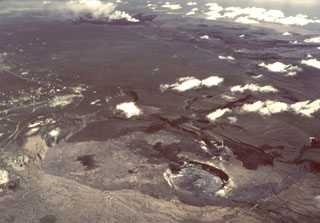Report on Kilauea (United States) — 28 June-4 July 2023
Smithsonian Institution / US Geological Survey
Weekly Volcanic Activity Report, 28 June-4 July 2023
Managing Editor: Sally Sennert.
Please cite this report as:
Global Volcanism Program, 2023. Report on Kilauea (United States) (Sennert, S, ed.). Weekly Volcanic Activity Report, 28 June-4 July 2023. Smithsonian Institution and US Geological Survey.
Kilauea
United States
19.421°N, 155.287°W; summit elev. 1222 m
All times are local (unless otherwise noted)
On 30 June HVO stated that Kilauea was no longer erupting. Lava supply to the lake ceased on 19 June and sulfur dioxide emissions had decreased to near pre-eruption background levels. Seismicity was also low. The Volcano Alert Level was lowered to Advisory (the second level on a four-level scale) and the Aviation Color Code was lowered to Yellow (the second color on a four-color scale). The report noted that gradual inflation was detected at summit tiltmeters during 19-30 June. Incandescence from previously erupted lava was visible in overnight webcam images during 29-30 June; the lava continued to cool.
Geological Summary. Kilauea overlaps the E flank of the massive Mauna Loa shield volcano in the island of Hawaii. Eruptions are prominent in Polynesian legends; written documentation since 1820 records frequent summit and flank lava flow eruptions interspersed with periods of long-term lava lake activity at Halemaumau crater in the summit caldera until 1924. The 3 x 5 km caldera was formed in several stages about 1,500 years ago and during the 18th century; eruptions have also originated from the lengthy East and Southwest rift zones, which extend to the ocean in both directions. About 90% of the surface of the basaltic shield volcano is formed of lava flows less than about 1,100 years old; 70% of the surface is younger than 600 years. The long-term eruption from the East rift zone between 1983 and 2018 produced lava flows covering more than 100 km2, destroyed hundreds of houses, and added new coastline.
Source: US Geological Survey Hawaiian Volcano Observatory (HVO)

